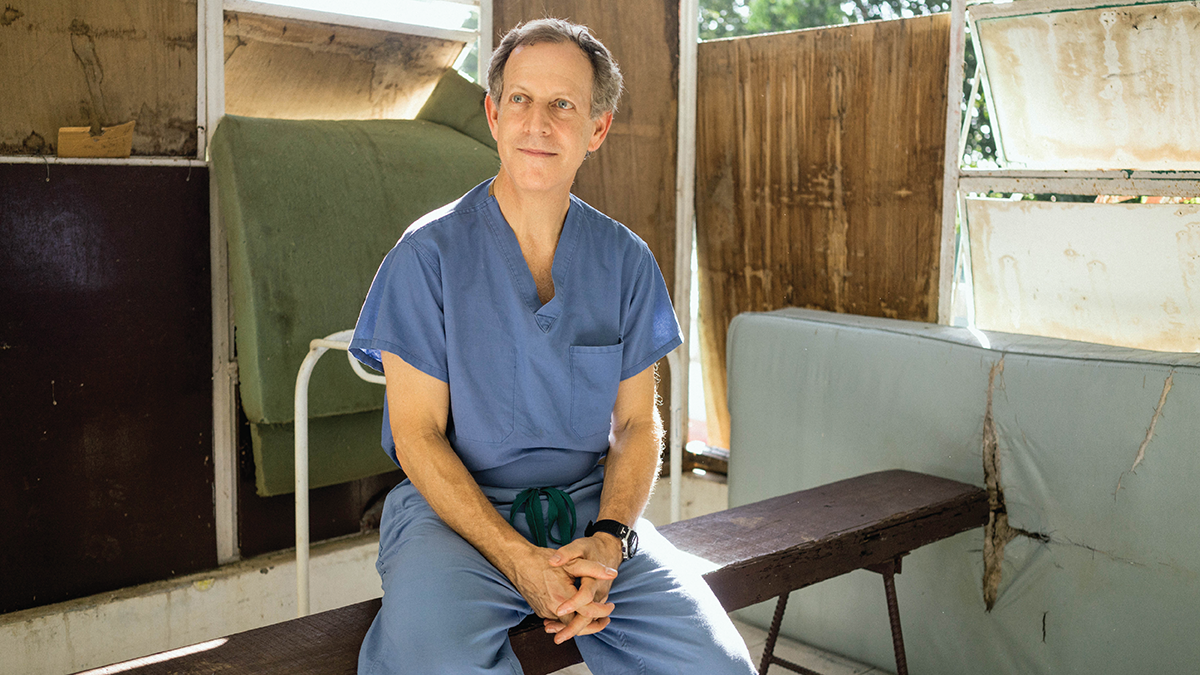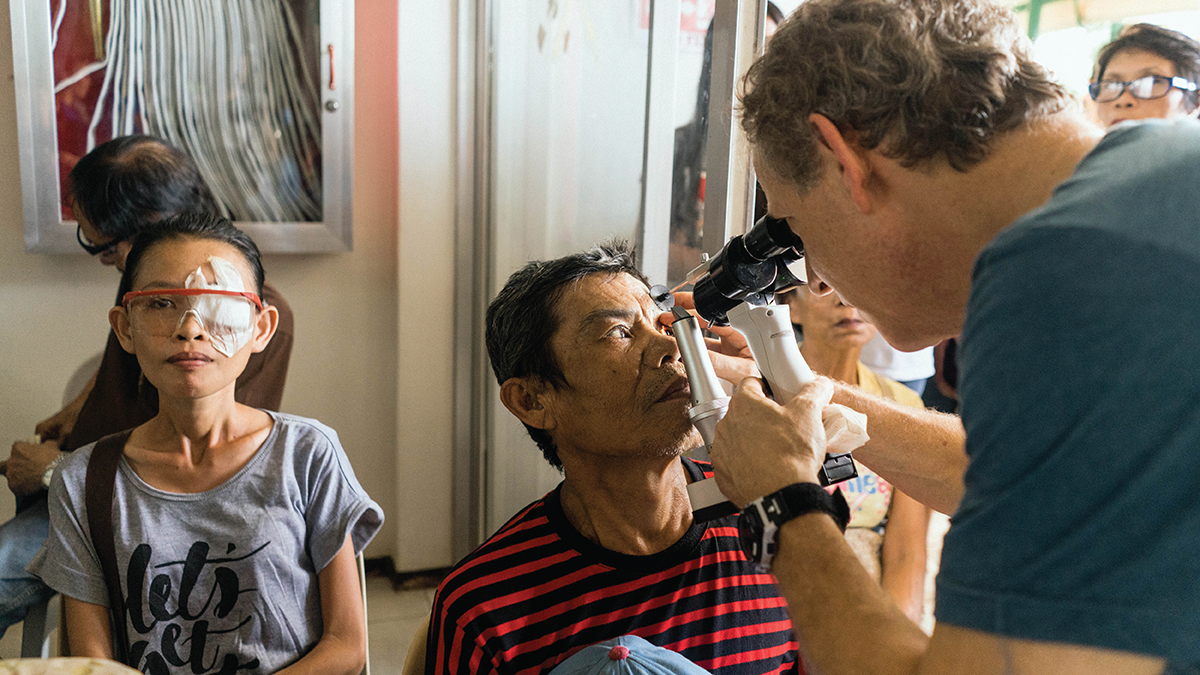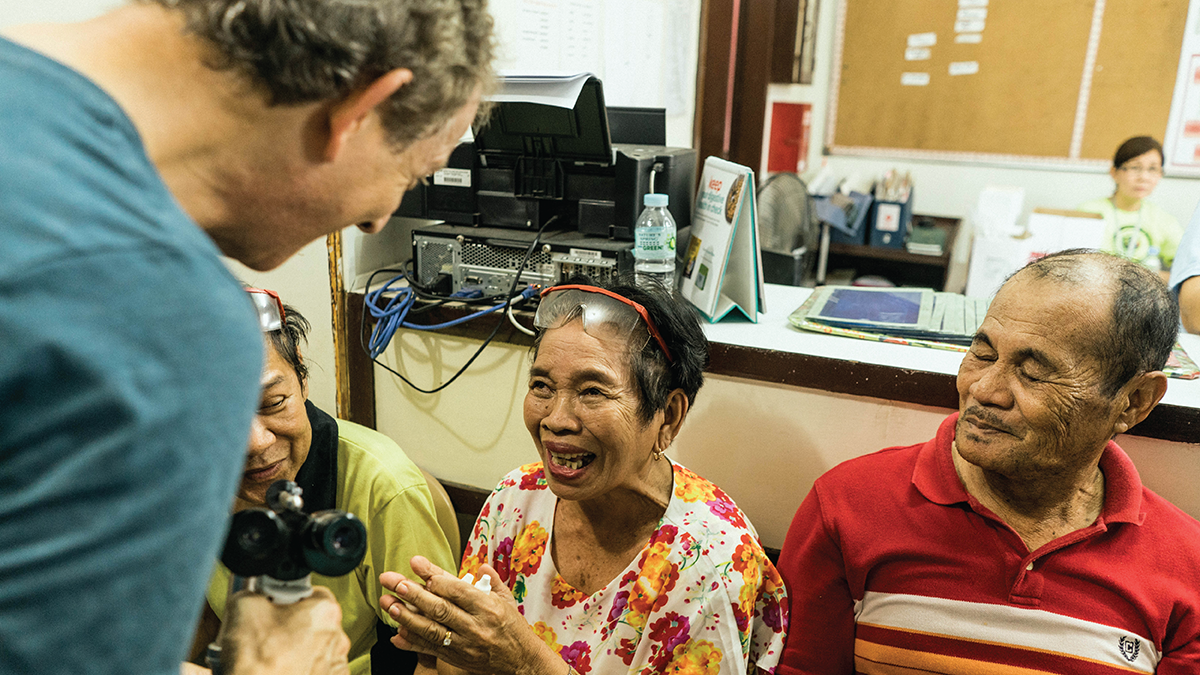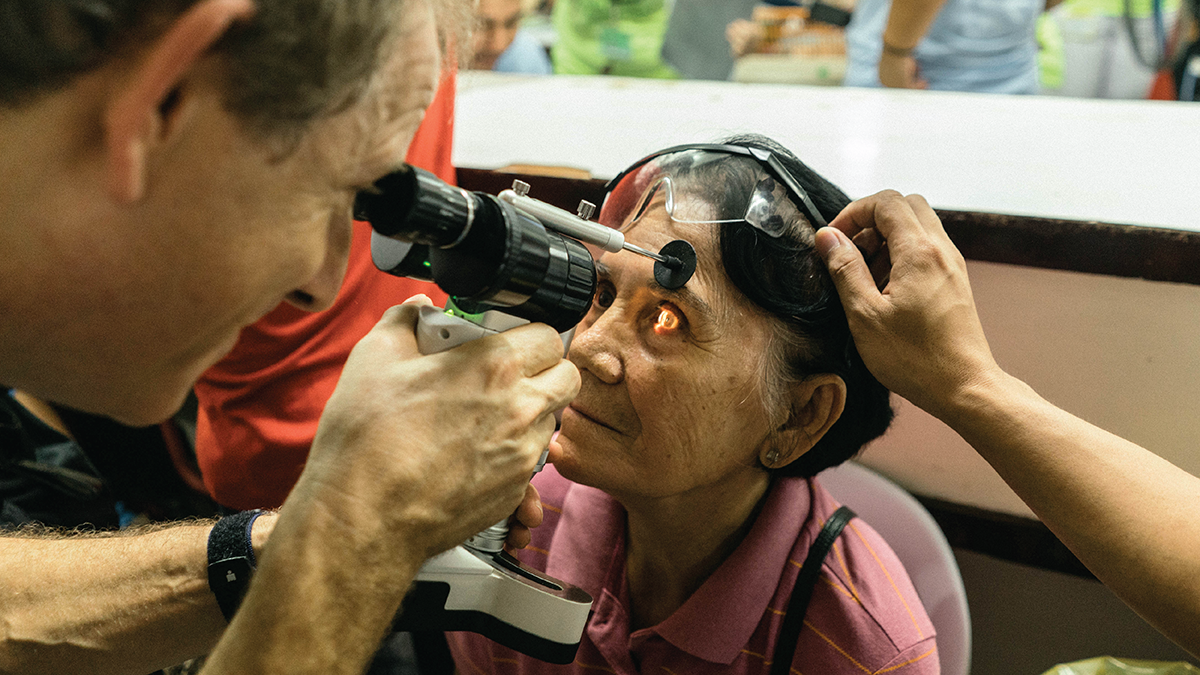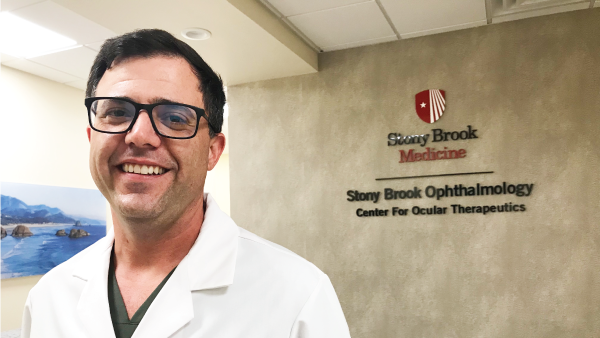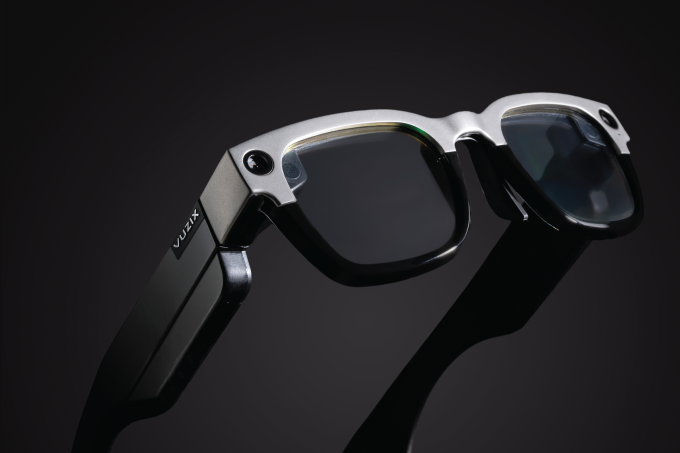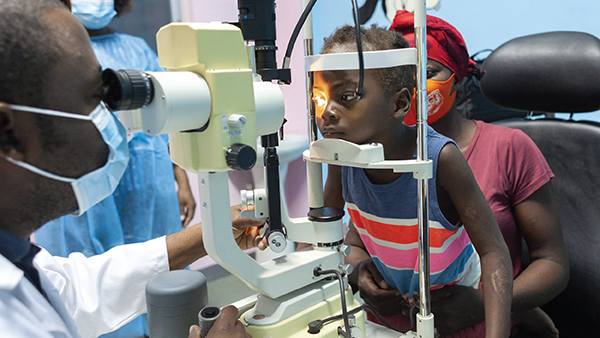Taming the Beast of Blindness
The story behind the unlikely collaboration between an ophthalmology NGO and the most-subscribed individual on YouTube
By now, it’s likely that you’ve at least heard of the video uploaded by MrBeast that features 1000 people who receive free cataract surgery. At the time of writing, “1000 Blind People See For The First Time” has been viewed nearly 100 million times, taking the challenges and miracles of cataract surgery video well beyond the ophthalmology community and into the general public, where there is far less awareness of the burden of global cataract. Such numbers have also delivered a great deal of discussion and debate.
But MrBeast (Jimmy Donaldson), his team, and his influence were only one part of the equation. To find out more, we spoke with Jeffrey Levenson, Chief Medical Officer of SEE International and Founder of Vision is Priceless’s Gift of Sight project, which together provided the ophthalmic care to the patients who featured in the video. Here, he gives us the inside scoop on how the collaboration came about, the logistics of completing 1000 cataract surgeries across the globe, and the role of such projects on steering the global conversation on needless blindness.
How did your conversation with Jimmy Donaldson come about?
For over 30 years, I’ve been providing free cataract surgery to blind and medically indigent patients in and around Jacksonville, Florida, through a program I founded called “Gift of Sight,” which is administered by a local charity, Vision is Priceless. Additionally, for over 10 years I’ve been traveling internationally, bringing sight to the world’s poorest people with the help of SEE International. I find that providing care for those most in need brings me great joy and satisfaction – it’s the purest expression of my best self, and a profound reminder of why I became an ophthalmologist in the first place.
About five years ago, I told the story of my adventures in global humanitarian ophthalmology in a TED talk titled “Ending Preventable Blindness: reinventing cataract surgery.” (see video below) It wasn’t viewed by 85 million people in a week, as MrBeast’s YouTube video was. Instead, around 11,000 people saw it over the course of five years. One of those people, it turns out, was Jimmy Donaldson – MrBeast. About three months ago he called me out of the blue and told me he loved the project. He asked if I could arrange to do 1,000 free surgeries on blind patients all around the world, three weeks hence. I’d never heard of him at the time. The idea sounded so preposterous, I almost hung up. Instead, I googled him. Turns out he’s a 24-year-old kid with 130 million subscribers on YouTube, a full-time staff of 60, and tens of millions of dollars in revenue. I called him back.
The rest, as they say, is history. I called every free medical clinic and homeless clinic I could, and found about 40 patients who were bilaterally blind, or nearly so, in and around Jacksonville. MrBeast came down to Jacksonville for the day, and we did them side by side, interviewing and filming each patient before and after surgery. I then hooked him up with SEE International, who sent his crew on trips to Mexico, Namibia, Ghana, and Honduras, among a number of other sites. He paid for the whole thing, and made a generous donation to top it off. The video is racking up countless views, and people all around the world are suddenly talking about the tragedy of needless blindness – and the means of addressing it.
I always imagined that the day would come when the world would rise up in moral indignation against the idea that tens of millions of our brothers and sisters are needlessly blind for want of a 10-minute surgery that can be done at a material cost of US$35. But never once did I envision the messenger would take the form of a 24-year-old YouTuber named MrBeast.
How long did it take and how difficult was it?
As the founder of Jacksonville’s Gift of Sight program and the Chief Medical Officer of SEE International, I was perhaps uniquely positioned to make this happen. Once the phone call came – and once I knew the offer was real – the rest was easy. The logistics of the international piece were managed by SEE – essentially, it’s what we specialize in. Our staff is dedicated and profoundly talented. The same can be said for Vision is Priceless and the domestic effort.
Sadly, it’s not hard to find blind people in Florida, where 16 percent of us – almost three million people – are without access to basic health insurance. Worldwide, there are perhaps 200 million people awaiting cataract surgery right now. Finding the patients is always the easy part.
What message were you hoping to share – and what are you hoping will come out of this coordinated effort?
Small incision cataract surgery (SICS) is a modification of modern cataract surgery that enables highly efficient, highly successful surgery to be done in volume at a material cost of less than $35 per case. With it, we have the technology, and the means, to end half of all the blindness in the world. What we don’t yet have is sufficient moral indignation and the accompanying collective will to see it done. I’m hoping the MrBeast collaboration and the worldwide dissemination of the facts of needless blindness bring us closer to the day when we will see it once and for all eradicated.
You said, “If MrBeast can light a fire, and if we can get governmental and private support behind it, we can end half of all the blindness in the world” What additional support is needed?
Successful cataract surgery pays for itself. In poorer parts of the world, household income doubles after cataract surgery. And since blind people have three times the death rate of people who can see, cataract surgery also saves lives. Barriers to care include infrastructure, training, education, and mindset. SEE International works alongside several other outstanding charities to address these structural barriers and to build that capacity and the will to end this problem.
The video has received some backlash. What is your response?
I think much of the criticism of the project is a reflection of the moral outrage that people feel when they learn that we have neighbors and friends all across the United States and around the world, who are needlessly blind for want of a 10 minute surgery. The right to sight ought to be a human right, not a gift bestowed by a kid millionaire. I share that outrage – and Jimmy [MrBeast] does too. That’s why he initiated the project. I honestly welcome the backlash because I believe it forces us to look inward and to ask ourselves what kind of world we want to live in – and how to best shape it.
How does SEE International balance the provision of acute care with the support of local infrastructure?
Every SEE expedition is hosted by an international host doctor, who invites us in and seeks our partnership. We supply material support, skills transfer, and collegiality. The goal is always to build capacity while caring for the poor and blind. We seek never to undermine local infrastructure or compete with local providers.
Do you plan to do more projects that help those in need whilst raising awareness on such a scale?
SEE often brings a photographer, writer or videographer along to tell the stories of the people we serve. We humans are victims of our cognitive biases, and we’re more moved to give by a single story, or magical image than we are by the stark fact of 200 million people with moderate or severe cataractous visual loss. Of course, we’ve never had the reach or the impact that MrBeast’s video generated, and this may have been a once in a lifetime – lightning in a bottle – moment. But we’ll continue to try to tell the story, in the hopes of slowly but surely building support to chip away at the burden of needless blindness.
What are SEE International’s immediate plans for the future?
SEE coordinates almost 200 trips a year to 50 different countries. We’re excited to take the momentum MrBeast has bestowed upon us and to move forward with resolve. No one in the world – and certainly no one in a developed nation like the United States – should be blind for need of a simple cataract surgical procedure. And we will continue to work towards the day when that’s no longer the case.
To learn more about SEE International and their ongoing projects, visit their website: www.SEEIntl.org
This article was originally published in The Ophthalmologist.
The New Optometrist Newsletter
Permission Statement
By opting-in, you agree to receive email communications from The New Optometrist. You will stay up-to-date with optometry content, news, events and sponsors information.
You can view our privacy policy here
Sign up to The New Optometrist Updates
Permission Statement
By opting-in, you agree to receive email communications from The New Optometrist. You will stay up-to-date with optometry content, news, events and sponsors information.
You can view our privacy policy here
Sign up to The New Optometrist Updates
Permission Statement
By opting-in, you agree to receive email communications from The New Optometrist. You will stay up-to-date with optometry content, news, events and sponsors information.
You can view our privacy policy here
